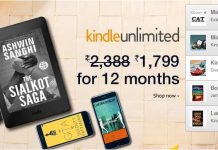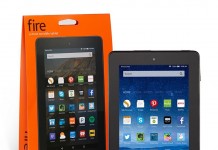 So, it’s now been a month since I got my Kindle. Was it a worthwhile upgrade for me? Which features am I using and which am I finding lacking? Do I see myself buying another reader anytime soon?
So, it’s now been a month since I got my Kindle. Was it a worthwhile upgrade for me? Which features am I using and which am I finding lacking? Do I see myself buying another reader anytime soon?
MY TWO REASONS FOR UPGRADING
First, I must admit, I am really loving my Kindle. I use it daily and am finding that I am especially using the text to speech and dictionary features, which were the two things lacking in my Sony that prompted me to upgrade.
I am not a huge music person, so I found that while walking to the subway or running errands or using the track at the gym, I was wasting a lot of time on the same handful of ipod songs. I was very interested in text to speech because I could use this time more productively—and unlike an audio book, where all you can do is listen, I could resume reading in the regular way when I was off my feet again. The TTS feature has definitely lived up to my expectations. On a typical day where I might listen on the way to work, on the way home from work, and perhaps for half an hour at the grocery store or post office on the way home, I can zip through 5% of a story. I have a huge backlog of books I haven’t read yet, so while there is something to be said for a leisurely enjoyment of a meaty story, there is something to be said as well for speeding up ones progress sometimes. I have been a lot more careful with my ebook buying this year, so I want to clear out some of the trashier reads so I can focus on the more quality offerings.The dictionary feature was something that when I first started reading ebooks, wasn’t a priority for me because I don’t need a dictionary when I read in English, and no readers at the time offered multi-lingual support for those who read in other languages. When I learned that the Kindle did, that was one of the ‘deal-breakers’ for me regarding continuing with the Sony. I am fluent in French, but my speaking is much better than my reading and I wanted to address that imbalance. I was delighted to have a device with an on-board French-English dictionary and that remains my only Kindle store purchase thus far. Unfortunately, all of my ‘reading in French’ time has been occupied with a work-related course right now so I have had to put aside my leisure books for now. But I have two novels ready to go for the end of March, when the course ends. I have had the chance to use the dictionary a little on some notes I saved from the course website and converted using Calibre, so I know this feature will be one I will enjoy.
CONTENT FOR THE KINDLE
I have not bought any content, except for the replacement dictionary, from the Kindle store. Prices in Canada are $2 higher even if you don’t use the wireless feature, so this has turned me off a little. Even the ‘free’ books cost $2! And I prefer to have a backup on the computer—I can’t do this right now because Kindle for Mac is still ‘pending.’ When Kindle for Mac comes out, I may re-evaluate my stance on the Kindle store.
I have a lot of existing content I have been using on the Kindle. It took about two minutes to bulk download my Fictionwise multiformat books in Kindle-compatible mobipocket. They look beautiful on the Kindle and I am very happy with how fast and easy it was to get going with them. Other content, however, has been trickier. I use Calibre to manage my library and found that its conversion of LRF files was slow, glitchy and did not always produce a nice-looking book. So I spent some time seeking out ‘native’ mobipocket versions of many of the free books I had downloaded from Mobile Read, and I spent even more time tweaking the conversion settings on the few LRF-only titles, trying to get them readable. It took half a dozen ‘help me!’ posts in the Calibre forum at Mobile Read before I had all my books ready to go. Converting one’s own content for the Kindle is definitely not as fast or easy as getting content that’s ready to go, and the mobi format seems to need more tweaking to look nice than LRF for the Sony did.
I have also found, to my chagrin, that some of the content I have already is pretty terrible. I got into a cycle for awhile where I was very tempted by the Fictionwise rebate system and I would buy expensive best-sellers just to get the rebate. Then I would spend the rebate on a dozen cheap multiformat books. I am getting much more reading done thanks to the Kindle’s TTS feature and have been trying to get through some of these cheapies and unfortunately, most of them are rather forgettable. So I think I am more amenable to buying Kindle content now because I don’t feel like I have to waste my money—or time—on accumulating Fictionwise credit to use on mediocre books. I would rather pay $6 for a book I want, and only get that book, than spend $16 and get one book I want and five other so-so ones. My Fictionwise bookshelf right now is cluttered with these cheap, forgettable books I never would have bought in paper. I think my eventual Amazon bookshelf will be much more selective.
PERIODICALS AND MAGAZINES
I was interested in the idea of getting periodicals or magazines on the Kindle. I liked the thought of having the morning paper auto-delivered to me wirelessly while I slept. I bought a sample issue of both a newspaper and a magazine to see how I enjoyed the experience.
I found I did not enjoy it. Firstly, they don’t have pictures, which made the magazine less fun. Secondly, I found that they took far too long to read for me—it’s much faster to just go on a news website, skim the headlines and read in full the handful of articles that might merit further exploration. A Kindle paper was several hundred pages. I just didn’t need that much news. It’s easy enough to use the five-way controller to skip ahead, but it just seemed like too much effort and expense and hassle. On a slow news day, I can get my news in less than ten minutes by clicking to one website.
OTHER KINDLE FEATURES
I had been looking forward to the on-board Wikipedia, but it proved to be unspeakably slow, and at times rather buggy. Several times, it crashed the Kindle and forced a re-start. If I am near a computer, it’s faster and easier to view Wikipedia there. I also found it took a lot of menu navigation to get it open on the Kindle. I think there is room for improvement in this area. Perhaps the impending app development atmosphere will make accessing and using these features a little easier.
I was dismayed too that no other website was accessible using the on-board browser. It would be nice to be able to load new content from sites like Feedbooks directly from the Kindle. I don’t know why this option is not available in Canada.
WOULD I UPGRADE AGAIN?
I think the Kindle will more than meet my needs for awhile. If the Kindle app for the iPod Touch had the dictionary feature and TTS, an iPad might be a better device for me. I still might consider an iPad, but it would be more as a netbook replacement for me to use when I’m teaching. I have also heard that Indigo/Kobo might be launching a device, but I have no idea what features it might have.
I was happy with the Sony. The only reasons I upgraded were to have the dictionary and the text to speech feature which were features missing in the device I had. If I new device comes out which has features I require that the Kindle does not have, I would upgrade, but right now I can’t think of what those hypothetical features might be. Certainly, as far as ‘e-ink device on which you can do nothing but read’ the Kindle has everything I could imagine needing. I suppose if we got to the point where something like an iPad could match it both on battery life AND power-user features like multilingual dictionary support and TTS, I would upgrade again. But right now, it seems like multifunction devices like this one are not ready to match the features I am using on the Kindle

































Wikipedia is easy to get to through the search feature. If you hit the menu button and select “Search”, you can then type in what you are looking for and select that you want to search Wikipedia.
I believe that the reason no other browsing is allowed in Canada right now is because Amazon has not been able to negotiate a good wireless package with Rogers. I believe it is still in the works and we will see it sooner or later.
There are a few “really free” books available to Canada. But they sort in with the $2.00 books, so you have to have a sharp eye to find them. And they’re more likely to be public domain than bestsellers, which of course you can find on Gutenberg or elsewhere.
I have bought a couple of the $2 books, when it is a favourite author or something that I found to be worthwhile. I download a sample first to see if I like it and if it is worth me paying $2 for. But as you say, there’s plenty of other reading material on my kindle, so no reason to load it up with nonsense that I don’t need.
Did you know that you can put mp3 books in the audible directory and play them just like audible books (ie. it will bookmark your place and show up on your book list)?
It is easy to back up from Kindle to a computer. You just plug it in to a USB port and copy the files as if it were a drive. I periodically do a select all and copy backup. It takes very little time.
Oh, and the efficient way to read magazines and newspapers on the Kindle is to make use of the View Sections List feature. This lets you look at all the sections and the number of articles in each one. Then, you click on the number of the articles in a section and you see a table of contents for that section. Then, you scan the headlines, and only read the ones you want without having to skip through everything else.